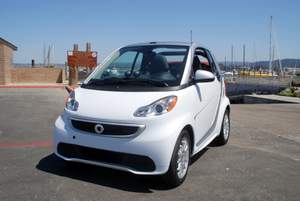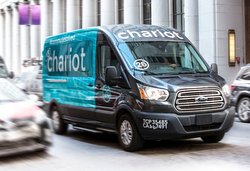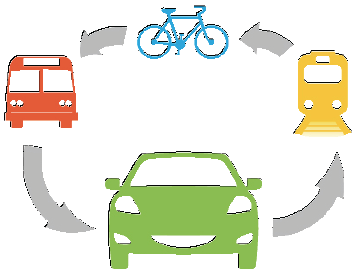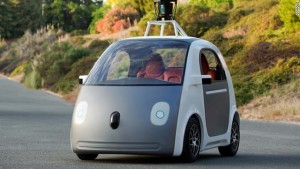We’ve Entered the Age of Shared Mobility
Car sharing has changed dramatically since Clean Fleet Report first reported on it almost two decades ago. While it was picking up steam at that point, in the years since it has morphed and been influenced by changing technology, both in vehicles and in the software that enables the service. Some big players have jumped in and then retreated. Some auto companies have incorporated car sharing elements into their new business enterprises. Some small players were gobbled up by bigger companies. New ideas like Tesloop keep popping up.
Where car sharing once resembled a rent-by-the-hour system that was a more decentralized version of the traditional car rental, it has now become a ubiquitous system that includes shared use and even cars that drive themselves. The changes keep coming as illustrated in this recent update. We recently took a look at a brand-new local iteration run by the local auto club, but using software developed and being used by many others. Different types of non-ownership alternatives promise to be the way of the future.

Car sharing allows households to own only one car, instead of two or three, or for some to forgo car ownership completely, using the variations of car sharing and services to pick a vehicle or ride for a given task and location. For some Americans it gives a chance to drive and experience a different car, maybe an electric car they might be thinking of purchasing.
Before the pandemic, true ride sharing was growing where multiple people would share a ride to a common or near-common destination. This configuration (and of course mass transit) are the only real solutions to the growing congestion and driving frustration.
Like they say about real estate, with car sharing it is location, location, location. The best program for you is a function of where you live and your mobility requirements. But take a look at the variety of program available. One of the gurus of car sharing, Dr. Susan Shaheen of UC Berkeley, says we are in the age of shared mobility where new modes of alternative transportation services are making great changes. “Pushed primarily by demographic shifts, societal attitudes toward ownership, and advances in mobile technology, these modes are growing rapidly and becoming more numerous,” she commented recently. She outlines the variety of choices available in a white paper. For her car sharing had subcategories of:

- Roundtrip
- One-Way
- Personal Vehicle Sharing (which can include fractional ownership models)
Then there’s scooter sharing and bike sharing (also with subcategories of public, closed campus and peer-to-peer [P2P]). Autonomous technology can overlay much of this as well.
Alternative Transit Joins the Pool
Competing with car sharing are alternative transit services (shuttles or microtransit), ride sharing (carpooling or vanpooling), on-demand ride services (ridesourcing, ridesplitting or e-hail services) and courier network services (P2P delivery services and paired on-demand passenger ride and courier services).
The choices can be almost overwhelming, so services like Yelp can help you sort out the consumer-facing side of the choices. Where it used to be Hertz or Avis–or a taxi–the choices now are much more complex.
According to Navigant Research, it’s not going to change soon. Their take on car sharing and related services was just published. They found: “Mobility as a service (MaaS) solutions such as carsharing, ride-hailing, and micro transit provide much more flexibility while also enabling the replacement of 5-20 individually owned vehicles depending on the use cases. According to Navigant Research, global revenue generated by ride-hailing services is expected to grow to almost $1.2 trillion in 2026.”
Although the carshare service model has been well established over the past 15 years, there have been some significant innovations in the market recently. The success of one-way car sharing services is prompting more companies to consider offering this service model. Such services can increase utilization since members can use one-way car sharing for shorter, spur of the moment trips. Automakers have entered this market with mixed results, building substantial membership levels in only a few years, but they are also challenged with the new MaaS business model. Meanwhile, the adoption of plug-in electric vehicles (PEVs) in car sharing services could be one way for automakers to promote this technology that is still struggling for traction in the marketplace.
Car companies are aware of these shifts, as you can see below, and are doing their best to try to keep up. This is a subject we’ll keep checking in on as it evolves.
Let’s take a stroll through the new ways to get around, starting with companies that didn’t exist when we first started writing about the subject and now dominate the discussion.
Lyft

If there was any question about the changing landscape, General Motors’ $500 million investment in the ride sharing company Lyft. The stated goal is to experiment in autonomous on-demand vehicles, hedging the reduction in vehicle sales caused by ride sharing by making GM the preferred vehicle provider for Lyft drivers and integrating connectivity tools like OnStar. Lyft claims it is the fastest-growing ride share service and is available in 190 cities worldwide. Lyft also has rolled out multiple-rider sharing that creates an on-demand carpool. As with other ride-hailing services, Lyft has added scooter and bike-sharing services and integrated them into their app-based operations. Finally, the Lyft app also shows transit options to close the loop by illustrating a variety of ways to get from point A to point B.
Uber

Uber is the Hertz to Lyft’s Avis. It’s available in more than 700 cities around the world and offers a variety of vehicles to fit the needs of your trip, whether its an eco-friendly model or the full black limo experience. Uber’s value proposition is that it is cheaper than using a taxi and much cheaper than using a personal car. It seems to be working as the company in less than 10 years has generated more than 10 billion trips and are adding to the tally at the rate of 14 million trips a day.

Options keep expanding as with Lyft, so you can choose to share a ride, use a Lime scooter, Jump bike or moped. Uber’s also in the process of adding transit connection information to its app as it strives to become a one-stop mobility information service. Self-driving cars has been a focus of Uber for the last half of the decade with the company racking up about 80,000 autonomous miles a week as it strives to bring driverless cars into the mix.
Zipcar
Zipcar bills itself as the world’s largest car sharing service. It views itself as the logical alternative to car ownership (own the trip, not the car) and traditional car rentals. The company was purchased by Avis in 2013 and operates as a subsidiary of the traditional car rental company. Zipcar has more than one million members worldwide who can reserve and use 10,000 cars in 500 cities in nine countries. In the U.S. Zipcars can be found in Atlanta, Austin, Baltimore, Boston, Chicago, Dallas, Denver, Detroit, Houston, Los Angeles, Miami, Minneapolis, Milwaukee, New York, Philadelphia, Providence, Sacramento, San Diego,

San Francisco, Seattle and Washington, D.C. as well as 600 universities throughout the country. Zipcar offers more than 60 different makes and models of vehicles, including Audis, BMWs, Mini Coopers, pickup trucks, Prius hybrids and more. Each vehicle has a home location: a reserved parking space located on a street, driveway, or neighborhood parking lot in the member’s area, to which it must be returned at the end of the reservation.
Enterprise Car Share
Although Enterprise is known as a car rental giant, they have expanded into cars sharing in 2005, later featuring a program rich in hybrids, plug-in hybrids, and electric cars. Just as UPS has gone beyond delivery to offer large customers complex logistic services, Enterprise offers fleets a growing range of services, including vRide car-pooling services mentioned later in this article.
Enterprise acquired Philly-Car Share and its 13,000 users, then Mint Cars On-Demand, a car-sharing company serving more than 8,000 members in New York City and Boston. It later added Chicago’s 15,000 IGO car sharing service members and now operates on 130 college campuses, 40 government programs and has 300 business accounts in 35 states, Canada and the U.K. During the pandemic operations were shut down and it is now more focused on on corporate programs.
Hertz on Demand–A Cautionary Tale
Hertz tried to leverage its huge presence to expand into car sharing. Hertz has 8,500 locations in 150 countries. A growing number of hybrid and electric cars are offered in the Hertz Green Travel Collection. Its car share program, Hertz on Demand, launched in December 2008 and grew to more than 1,000 vehicles, 85,000 members and more than 500 locations worldwide, including corporate fleets, airports, hotels, utilities, government, and universities. However, the company pulled the plug on U.S. operations citing a “low return on investment” after a half-dozen years of operation.

Car2Go
Car2go, owned by auto giant Daimler was a leader in one-way car sharing. The company rebranded as Share Now in fall 2019 as BMW’s Reach Now was shut down and folded in with Car2go. The company abandoned North America and now operates only in Europe under the Share Now brand. It is now owned by Stellantis.
The current iteration of the company features a variety of electric and ICE Mercedes-Benz, BMW, Mini and other brands of cars. It has more than 14,000 cars in 18 European cities and claims more than four million registered users.
The service allows members to avoid the fixed costs of car ownership as well as parking charges, fuel costs, or recurring annual fees. No surprise fees are charged for being early or late, like some other car sharing services. You can take any of the car2go vehicles you find distributed around you, or you can reserve an available vehicle 30 minutes before you want to drive. That way, you can get to your destination faster. Once you reach your destination, you can either end your trip in accordance with your city’s parking rules, or you can keep it if you want to drive further.
ReachNow–Another Cautionary Tale?
German executives see an increased global interest in using cars as a service, with consumers and fleet managers paying by the minute, hour, and day. BMW ran a successful pilot program of EV car sharing in SF, based on its European model, but went on hiatus because of a lack of progress in securing parking permit regulatory change. ReachNow is starting to ramp up in Portland, Seattle, Brooklyn and other cities, but ultimately decided to join forces with Daimler’s Car2Go.
Ford SmartMobility/Chariot—Time for Spin?

Like GM, Daimler and BMW (and other car companies), Ford is taking a big picture view of the mobility business. We covered the start-up here. But the program was short-lived as Ford pulled the plug after two-and-a-half years (the company had been going for five total) after struggling to gain riders.
Ford purchased Spin, a dockless scooter-sharing company in 2018 and has been working at growing it in U.S. cities. That, too, was short-lived as the company was spun off to Tier Mobility in 2022.
RelayRides/Now Turo
RelayRides pioneered peer-to-peer car sharing is part of an emerging trend of the sharing economy. RelayRides enables personal car sharing with web listings, $1 million liability insurance, and GM OnStar support. Investors in RelayRides included Google Ventures and GM Ventures.
RelayRides changed its name to Turo in 2015 and has been described as an “Airbnb for real peoples’ cars.” It’s now a community of 10 million members with more than 350,000 vehicles (850 unique makes and models ranging from Teslas and exotics to pickup trucks) in four countries. The company claims rates are typically less than traditional car rental companies while allowing a more specific vehicle choice. For vehicle owners the pitch is they may be able to recoop the monthly payments on their vehicle by renting it out less than half of the month, retaining it for personal use the rest of the time.
Turo offers cars with manual transmissions, hybrid and electric vehicles, classic and specialty cars, and Deluxe Class and Super Deluxe Class cars.
vRide
Ridesharing to work carries more people each day than transit. Sharing cars and rides is challenging among strangers. Trust is natural for people who work together. vRide, now another mobility option at Enterprise, makes it easy for individuals, employers, and transportation managers to facilitate carpooling, vanpooling, and park and ride.

Getaround
Getaround is free to join, similar in concept to Turo. Choose from 1000s of cool cars shared by great people in 300 cities is the pitch of this peer-to-peer car sharing operation. Convenient hourly and daily rentals. No monthly or annual fees. All Getaround rentals include insurance coverage and 24/7 roadside assistance. It has a Tesla category for those looking to experience an electric car.
& More
A number of billion dollar giants, venture-backed players, and innovators see a major opportunity in the transition for vehicle sales to transportation services. With Daimler, GM and BMW now in the business, Toyota and others are evaluating whether to have their own car sharing program or strengthen partnerships. Audi invested in Silvercar, what it calls a “next generation” car rental company. We reported on Hyundai’s recently launched Mocean Lab Mobility venture.
Because cars haring is capital intensive, the business is a natural for banking and financial service giants. Sharing, peer-to-peer, and fractional ownership have risk and liability management challenges. Who better to solve these than insurance giant entering the business? With information technology and social networking being integral to innovative mobility sharing, look for new strategic alliances and partnerships.
Bookmark this site and check back as we continue to update this list.
John Addison: Meeting of the Car Sharing Minds
At a meeting several years ago, I (John Addison, founder of Clean Fleet Report) lunched with Zipcar President Mark Norman gave me a good idea of why members prefer the range of carsharing services to owning a car. A member can try an electric car one day, use a larger van to transport 6 people the next, then take an AWD to the mountains on the next. Zipcar’s potential is enormous. By succeeding at a university such as USC in Los Angeles, Zipcar has a base to expand in Southern California’s over 10 million car drivers and massive fleets. I expect Zipcar to soon have over one million members.

Just as UPS has gone beyond delivery to offer large customers complex logistic services, Zipcar offers fleets a growing range of services. For example, the City of Houston better manages vehicle use by adding 50 existing city-owned fleet vehicles, including 25 Nissan LEAFs, with Zipcar’s FastFleet® proprietary fleet sharing technology. By using Zipcar’s FastFleet technology, the City of Houston configures its fleet footprint in real time for optimal utilization; manages preventive maintenance, fueling, billing, and fleet distribution; and uses Zipcar’s analytics with data automatically captured during every trip. Zipcar’s FastFleet technology is used in Washington DC, Boston, and Chicago where DC officials estimate that they save approximately $1 million per year using FastFleet technology.
I talked with Rick Hutchinson, CEO City CarShare, at Meeting of the Minds. As a non-profit, City CarShare actively works to make urban mobility more effective as people combine walking, bicycling, transit, and carsharing. For 11 years, they have modeled best practices, which others learn from including Zipcar, Enterprise, and independents. City CarShare promotes equity with CommunityShare and AccessMobile. They promote sustainability by taking cars off the road and adding electric vehicles.
Susan Shaheen, Co-Director of Transportation Sustainability Research Center (TSRC) at UC Berkeley and now (2022) member of the California Air Resources Board, has probably done more research about shared-use mobility than anyone. TSRC studies have determined that each carshare membership has resulted in at least 9 vehicles being sold, removed, or purchase-postponed. The biggest shift is one car households becoming car-free due to cars haring; two cars to one is another big segment. Her insights greatly helped with this article.
One million U.S. carsharing members will soon become 2 million as people save thousands per year owning one less car. University students, city dwellers, and fleets have new flexibility in getting the right vehicle when needed including roomy sedans, pickup trucks, and even electric cars. Just as we are transitioning from owning expensive computers and software to mobile use of cloud services, transportation has moved beyond just owning a car to a rich menu of transportation services.
Related Stories You Might Enjoy:
News: Gig Car Share
News: Car Sharing Revolutions Are Coming; Some Are Already Here
News: Ford eMobility Moves Take It Into New Territory
News: Is Ride Sharing Eco-Friendly

Just as UPS has gone beyond delivery to offer large customers complex logistic services, Zipcar offers fleets a growing range of services.
@Suraj,
Not just Zipcar; all of the car companies are scrambling to make sure they have a piece of this growing mobility pie. –ed.
So who will be major car supplier to car sharing industry? Car rentals, P2P, car dealers, car manufacturers?
@Nerio,
I think the jury is still out, but don’t count out the traditional car manufacturers. GM has already signed a deal with Lyft. Uber’s talked about a Tesla deal. Expect more. What will be interesting is if the market becomes tailored in the way taxis have been over the years. –ed.
can i rent a car in one city and return it in another? I am looking for a share-ride from JFK to Ohio.
Would you please let me know what companies can i contact? Something like blablacar in Europe?
Thanks! A.
@adelina,
It is certainly possible to rent a car in one city and return it in another, but that is more likely to be found with a major car rental company like Hertz or Avis rather than a car-sharing company. The rental companies have the ability with their larger organizations to shuffle cars whereas most car-sharing operations are more locally based. –@ed.
These programs are amazing 🙂 I really love travelling and these are going to help me a lot, well I wanted to know does any of these provide as luxury and comfortable car like LIMO ? I want to appreciate you for sharing and please do answer me.
@James Jayden, Check out the options. Uber and others have limo-like options and smaller local operations are willing to be at your service. The competition in this space is continuing to increase, so keep you eye out for newcomers. We’ll be updating this page soon to help you keep up. –ed.
Hi. Where can i share a car around deerfield beach Florida
@Jacques Rheaume,
It looks like there’s not much car sharing going on in that area. I’d give Zipcar a call–1‑866‑4ZIPCAR. They are in the area. The other avenue to try is to contact a university in the area you’ll be visiting to see what programs they may have. Car sharing in the U.S. right now is most likely found at universities and very dense urban areas. Good luck. –ed.
I like the idea of p2p car sharing. Why is my car parked 10 hours a day while I’m working when someone else can use it? The car was made for driving.
@Mark That is the essence behind p2p car sharing, something we’ll be revisiting soon with a new article on Turo, one of the leaders in the field. –ed.
@Qwekee one as well;)
Another service heard from. –ed.
Hertz on Demand or 24/7 is not an option in the U.S. since end of 2015. It does still function in other countries, notably the U.K.
@Jill G Roberts. Thanks for the update. I must have used it right before they pulled the plug, but will update this story shortly. –ed.
GIG Car Share is my favorite, but thus far only Oakland and Berkeley
@Alex Cox,
Always interested in hearing more about local options. Feel free to tell us more about your experiences. Write us at publisher@cleanfleetreport.com. –ed.
MyCotra is a technology enabled social platform that helps you to initiate,
accept and undertake carpooling in order to use sustainable means of commuting,
reduce fuel cost, reduce stress associated with driving and reduce overall traffic in
the roads.
http://www.mycotra.com/
Thanks for this useful list.
Always glad to add to the world’s knowledge. –ed.
Thanks for the referral, Mary. We’ll be updating the page soon. Lots is happening in the car sharing space. –ed.
I am wanting to rent a car privately for almost 3 months a SUV with ski racks , what would be my best option?
@hawkeyeomi,
That’s a tough question, but you’ve got a clear goal. We’d suggest checking out your traditional rental companies like Hertz and Avis and see what kind of deals they offer, then compare them with a set-up like Turo, where you can “rent” else’s car. Let us know how it works out! –ed.